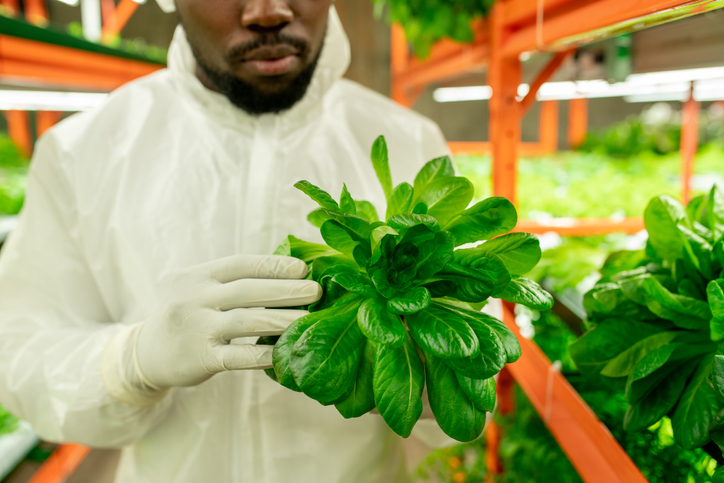How Food Traceability Technology is Shaping the Produce Industry
Food traceability technology has improved transparency and accountability in the industry in recent years. Read on to learn more about the advantages and challenges of this technology.

In recent years, there’s been a growing concern among consumers about the safety and origin of their food. This has led to a push for increased transparency and accountability in the food industry.
One solution that has emerged to address these concerns is food traceability technology. Technology is transforming the way that produce is grown, processed, and distributed through advancements in tracking systems and data analysis.
Here’s what you need to know about how technology is shaping the produce industry in regard to food traceability. We’ll also go over how Silo can help produce businesses improve their food traceability processes.
What is food traceability technology?
At its core, food traceability technology is a system that allows for the efficient tracking of food from its source all the way to the consumer. This can include information about where the food was grown, how it was processed, and who handled it along the way.
By using technology for traceability, it becomes easier to quickly identify the source of any food safety issues that may arise, which helps prevent foodborne illnesses and widespread outbreaks.
Here are some key examples of technology used for traceability.
Blockchain technology
One example of a food traceability solution is blockchain technology. Blockchain is a decentralized ledger system that securely tracks data and transactions. When applied to the produce industry, blockchain can create a record of an item’s journey from farm to table.
This record includes information about the producer, the distributor, and any quality control measures that were taken along the way.
This level of transparency builds trust between consumers and the food industry, as it provides a clear picture of the steps taken to ensure the safety and quality of the food.
RFID tags
Another example of food traceability technology is the use of RFID (Radio Frequency Identification) tags. These tags are placed on individual food items and can be used to track these items as they move through the supply chain.
This allows for real-time monitoring in regard to the location and condition of each item, as well as its temperature and other environmental factors. Some tags come with additional features, such as automatic alerts sent when an issue is detected (e.g., when a sudden rise in temperature has been detected, potentially leading to spoilage).
Traceability technology is not just limited to the tracking of individual food items, however. It can also be used to track entire batches of produce. By collecting data about a batch of produce, such as the date it was grown, its origin location, and the conditions in which it was transported, it becomes easier to identify the source of any issues that may arise.
The advantages of food traceability technology
There are numerous advantages of using technology for traceability, which include the following.
Improved food safety - Tracing the entire journey of a product from its source to its destination improves produce safety and makes it easier to identify and address any potential contamination issues throughout the supply chain
Reduced waste - With technology, businesses can better monitor their stock levels and efficiently manage their inventory, reducing the amount of waste due to overstocking or expired products
Increased accountability - Technology helps businesses better track where their food comes from and who is responsible for any issues that may arise. This makes it easier to hold those responsible accountable in cases of food safety violations or other issues
Improved transparency - Better traceability with technology makes it easier for customers to understand where their food comes from, making them more likely to trust the brand and make repeat purchases. This can help build long-term customer loyalty
Saved money - By enabling businesses to more efficiently manage their inventory, food traceability tools can help make the overall supply chain more efficient, which can lead to significant cost savings
Reduced risk of contamination - By identifying potential sources of contamination and taking action to reduce the risk of foodborne illness or other contaminants entering the food supply chain, businesses can better protect against potentially costly liabilities
Ensured compliance - Technology can also help businesses remain compliant with government regulations and industry standards, reducing the risk of fines or other penalties for non-compliance
The challenges of food traceability technology
Technology for food traceability doesn’t come without its challenges, however. Here are some of the few.
Absence of standardization
One of the biggest challenges is the need for a standardized system that can be used across the entire industry. Without a standardized system, it becomes difficult to share information and data between different players within the supply chain. This can lead to inefficiencies and data silos, which can prevent the full potential of food traceability technology from being realized.
High implementation costs
Another challenge is the cost of implementing technology. While the benefits of technology are clear, the upfront costs of implementing these systems can be significant, particularly for smaller producers and distributors.
Improve traceability using Silo
While there are challenges to implementing technology for traceability, the benefits are clear, and as technology continues to evolve and improve, it’s likely to become an inevitable necessity. Food traceability technology is transforming the way that produce is grown, processed, and distributed.
By using platforms like Silo, you can achieve a greater level of transparency and accountability for your produce business. Silo is an Enterprise Resource Planning (ERP) software solution that offers lot tracking and traceability. Eliminate the guesswork and benefit from greater visibility.
Book a demo with Silo today!
Want to book a demo with us?
Add your info and we’ll get one scheduled with you.